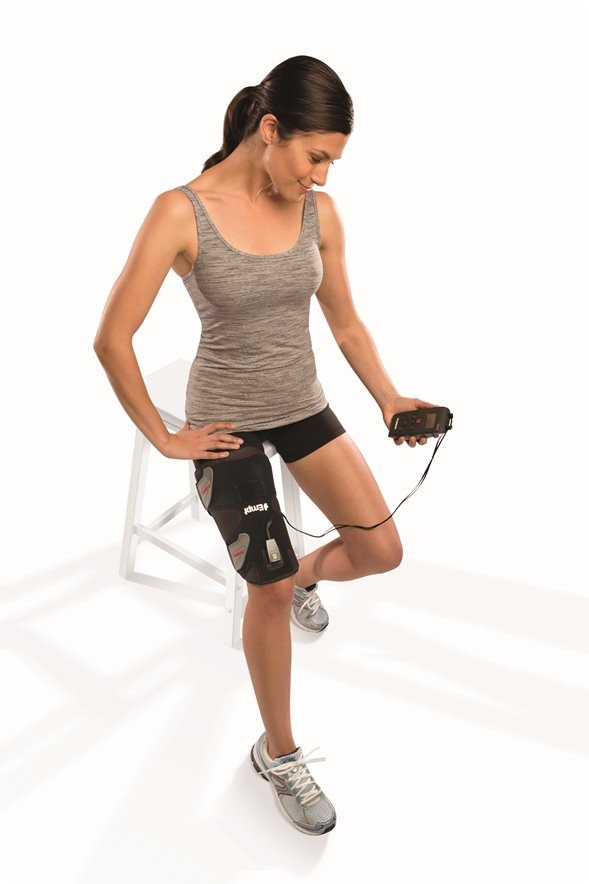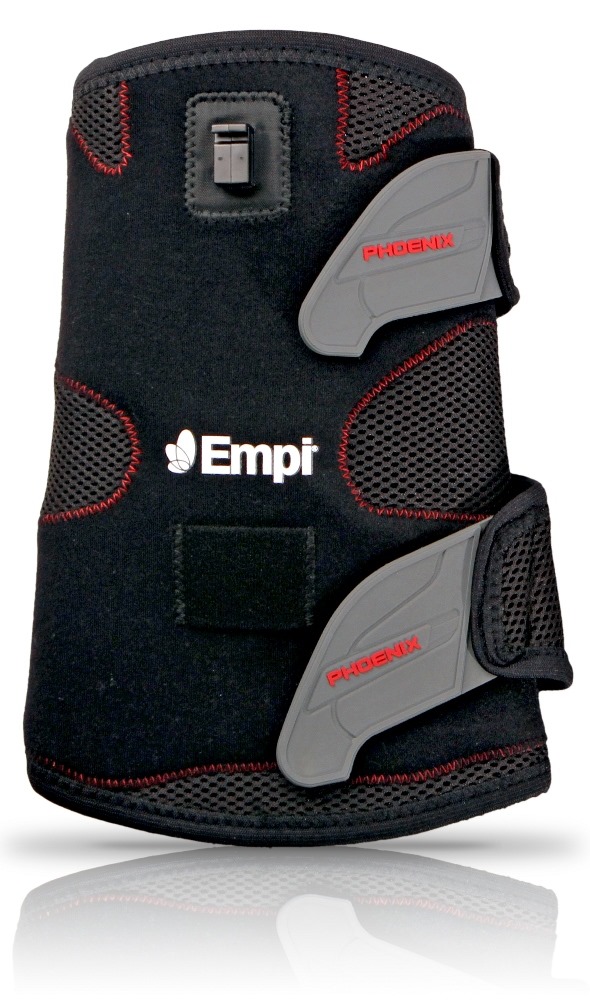
Why does muscle atrophy occur before and after knee surgery?
Atrophy is loss of muscle which can occur in response to either pain or trauma.
When you stop using something like muscle it gets weaker. When you have pain you stop using things, as a result your muscle weakens. What happens is you lose muscle mass. You don’t lose muscle fibre per se but you lose the size of the muscle. The less muscle you have, the weaker it is.
Muscle works based on stimulation: the more stimulation it has the bigger and stronger it gets. For example, weight lifters get bigger because they stimulate the muscle more. In the same way, if you don’t stimulate the muscle, the muscle gets smaller.
The way neuromuscular electrical stimulation works is by passively stimulating the muscle.
What techniques are currently used to treat muscle atrophy prior to and during rehabilitation from knee surgery?
Physical therapy is the main modality to treat muscle atrophy. After a total knee replacement a patient will undergo anywhere between 6 weeks and 12 weeks.
Neuromuscular electrical stimulation is a great adjunct (NMES). This is an electrical impulse that is delivered directly to the muscle. When we stimulate our muscles with activity, our nervous system sends electrical impulses to the muscle to make it function. In this case we are using an external source which is a device to stimulate the muscle and it therefore will engage the muscle in a similar fashion as to what would happen if we were actually exercising it.

Please can you outline the new therapy from DJO Global, Empi PhoenixTM, which has been designed to help simplify the treatment of muscle atrophy?
The Phoenix is both a TENS unit and an NMES unit. Therefore it can help with pain as well as increase muscle strength. The newest form of this device comes with an easy to use garment which is applied to the affected area.
How does a NMES differ from a TENS unit?
They are different impulses. They use a different frequency and duration of contraction. A TENS unit acts to decrease pain and a NMES acts to increase strength. It is purely based in the difference in the electrical impulse.
The unit that we used did both. In the morning we used the NMES mode and in the afternoon we used the TENS mode to decrease the discomfort.

How does this electrical stimulator work?
It works by sending electrical impulses to muscle causing it to contract. Contraction then increases strength.
What are the benefits of this electrical stimulator and how does this technique differ to other therapy options?
The stimulator involves no active activity by the patient; it is purely a passive device. The patient can literally read a book or watch TV and receive the treatment.
Was the device more efficient than physical therapy?
I can’t really answer that as we didn’t really look at muscle mass per se and we didn’t look at strength, we looked more at functional goals and patient satisfaction goals. The bottom line was that the patient satisfaction goals and the functional goals were similar.

How long did you treat the patients for using this device and how many patients were involved in the study?
They started about 14 days before surgery and continued for around 60 days afterwards.
We treated around 70 patients.
How has the effectiveness of the Empi PhoenixTM been measured?
We looked at using this type of device following total knee replacement and found similar results in patients who used this type of device as to those who had active physical therapy.
There was no significant difference in the parameters we looked at. We looked at the Knee Society Scores and the WOMAC scores. These are scores looking at patient satisfaction and patient functional results.
Is there a large learning curve associated with using the Empi PhoenixTM?
Not at all, just apply the garment and turn the device to the proper setting.

What impact do you think this new technology will have on the treatment of ACL and total knee replacement rehabilitation?
It will be a great addition to the treatment of both ACL and TKR. It is easy to use and helps with pain as well as improving strength.
What are the current limitations of the Empi PhoenixTM? How do you think it could be improved?
The electrodes occasionally need changed and the garment can get soiled in the post op phase.
Where can readers find more information?
March 2013 Orthopedics has the complete article of my study. Also the DJO website might be helpful. https://www.djoglobal.com/products/empi/empi-phoenix
About Dr. Levine
 Dr. Levine is a graduate of the Pennsylvania State University School of Medicine at the Milton Hershey Medical Center.
Dr. Levine is a graduate of the Pennsylvania State University School of Medicine at the Milton Hershey Medical Center.
He did his residency in Orthopedic Surgery at the Cleveland Clinic and did a fellowship at the University of Graz Austria.
He serves as Vice Chairman of the Dept of Orthopedic Surgery at Forbes Regional Hospital of the Allegheny Health Network and is Clinical Associate Professor of Orthopedic Surgery at Temple University School of Medicine.